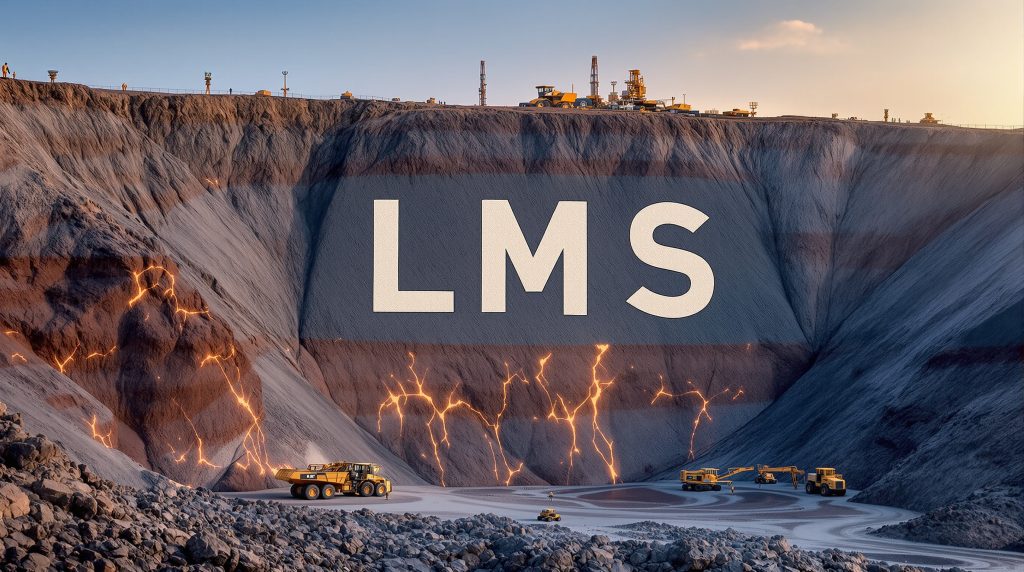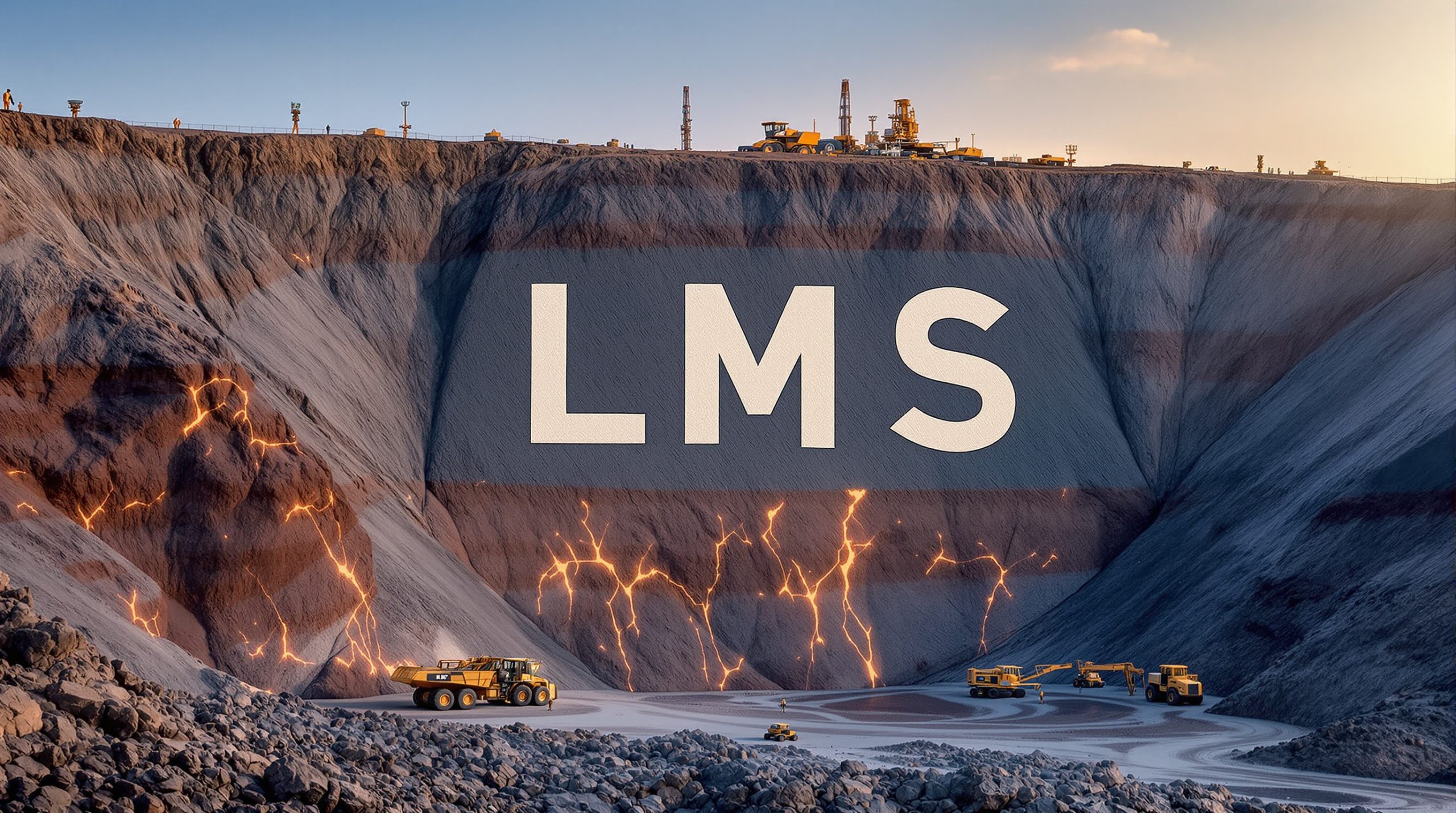Major Electromagnetic Discovery Signals Strong Copper-Zinc Potential at Litchfield's Oonagalabi Project
Litchfield Minerals Limited (ASX: LMS) has achieved a significant breakthrough at its Oonagalabi Project with downhole electromagnetic (DHEM) results confirming a substantial conductive body extending 400 metres along strike and 120 metres in depth at the VT2 target. The Litchfield Minerals copper-zinc discovery represents exactly what explorers seek: a large, coherent sulphide system with strong conductivity signatures indicating potential massive sulphide mineralisation.
The DHEM survey has revealed that the company's first drill hole OGRC011 intersected only the lower edge of the conductor, with the main conductive core lying 35 metres up-dip. This positioning potentially contains much thicker, more concentrated sulphide mineralisation than initially identified.
The initial hole already delivered 168 metres of sporadic sulphides, including zones of semi-massive to massive sulphides. These zones contain pyrrhotite, chalcopyrite, and sphalerite – the key minerals associated with copper-zinc deposits.
DHEM Survey Reveals Large Conductive System Up-Dip from First VT2 Target Hole
Furthermore, the DHEM survey has demonstrated that the conductor system extends well beyond current survey capabilities. The main conductor spans 400+ metres along strike with a 120+ metre depth extent, though DHEM equipment cannot define the full system limits due to its size and strength.
Management has expressed significant confidence in these results. "To hit sulphides in our first hole into VT2 and then see the DHEM light up an even larger zone above it, is exactly the kind of signature you want when chasing big copper-zinc systems," said Managing Director Matthew Pustahya. "Every dataset, VTEM, DHEM and geology, is now lining up."
Key Discovery Highlights:
- Semi-massive to massive sulphides identified with 4% pyrrhotite, 4% chalcopyrite, 3% sphalerite
- New high-priority drill hole planned 35 metres up-dip to target conductor core
- System appears structurally controlled, consistent with large-scale copper-zinc deposits
- Visual confirmation of sulphide mineralisation validates geophysical interpretation
Understanding DHEM Technology: The Key to Detecting Hidden Ore Bodies
Downhole Electromagnetic (DHEM) surveying represents one of the most powerful tools in modern mineral exploration. This technology proves particularly effective for identifying conductive sulphide ore bodies that traditional surface geophysics might miss or underestimate.
DHEM involves lowering electromagnetic equipment down existing drill holes to measure conductivity responses from surrounding rock formations. Unlike surface electromagnetic surveys that provide broad regional pictures, DHEM offers precise, high-resolution imaging of conductive bodies within hundreds of metres of the drill hole.
The technology works by creating electromagnetic fields and measuring how they interact with conductive materials in surrounding rocks. Sulphide minerals, which commonly host copper and zinc, conduct electricity much better than typical rock formations, creating distinct signatures.
Investment Significance of Advanced Geophysical Results
When a DHEM survey reveals conductors too large for the survey loop to fully capture – as occurred at VT2 – it suggests extensive sulphide systems. These systems could potentially host significant copper-zinc mineralisation, making the Litchfield Minerals copper-zinc discovery particularly compelling.
The technology acts as an underground detection system, providing explorers with precise targets for follow-up drilling. This approach reduces reliance on surface exploration alone whilst improving drilling success rates.
For Litchfield's discovery, DHEM technology has provided crucial intelligence about where the most conductive parts of the system are located. This data guides strategic placement of future drill holes, potentially accelerating discovery timelines whilst reducing exploration costs.
Strategic Drilling Campaign and Immediate Next Steps
Litchfield has mapped out a systematic approach to testing the VT2 conductor's full potential. Multiple geophysical surveys are scheduled to refine targets before the next drilling phase begins.
The company has outlined specific immediate priorities with clear timelines. In addition, the strategic significance of the next drill hole cannot be understated, as DHEM data indicates OGRC011 only intersected the lower edge of the conductive system.
| Activity | Timeline | Objective |
|---|---|---|
| New VT2 drill hole | Early November | Test conductor core 35m up-dip from OGRC011 |
| IP surveys | November 1, 2025 | Map three priority areas including VT2 |
| Ground EM surveys | Post-IP completion | Vector into most conductive zones |
| Bullion Drilling mobilisation | Mid-November | Premier RC contractor for ongoing program |
Planned VT2 Follow-up Hole Specifications
The upcoming drill hole will target what could be the most mineralised section of the conductor. Located at 487175E, 7442065N, 870m elevation, the hole will be drilled at -55° dip, 145° azimuth to approximately 250 metres depth.
The company is transitioning from its current contractor to Bullion Drilling, a premier RC drilling contractor. This strategic move ensures Litchfield can maintain drilling momentum as additional geophysical data becomes available, preventing delays that commonly affect junior exploration companies.
However, the planned Induced Polarisation (IP) surveys will provide additional data about electrical properties of the subsurface. These surveys could potentially identify additional sulphide zones that expand the Litchfield Minerals copper-zinc discovery beyond the current VT2 target.
Investment Thesis: Multiple Discovery Vectors Converging
Litchfield Minerals is positioning itself at the intersection of multiple positive exploration catalysts. These factors could drive significant value creation for shareholders over the coming months.
The VT2 conductor demonstrates exceptional scale, with systems too large for current surveys to define limits. Moreover, the first drill hole achieved immediate success, intersecting 168 metres of mineralisation in the inaugural VT2 test.
| Factor | Current Status | Potential Impact |
|---|---|---|
| VT2 Conductor Size | 400m+ strike, 120m+ depth | System too large for current surveys to define limits |
| Drilling Success Rate | First hole hits sulphides | 168m of mineralisation in inaugural VT2 test |
| Technology Validation | VTEM and DHEM align | Both surface and downhole EM confirm large conductor |
| Regional Context | 3km+ mineralised corridor | VT2 adds to growing Oonagalabi system scale |
Comparative Context and Risk-Reward Profile
The Northern Territory hosts several world-class copper-zinc deposits, with the region's geological setting favouring large-scale mineralised systems. The Harts Range, where Oonagalabi is located, represents extensively deformed and transformed sedimentary and igneous rocks.
Litchfield's systematic approach – combining modern electromagnetic surveying with targeted drilling – mirrors successful exploration strategies. These strategies have been employed by companies that have made significant discoveries in similar geological terrains.
Consequently, the company's strategy of using DHEM to precisely target the most conductive zones reduces drilling risk. With multiple electromagnetic anomalies across the broader Oonagalabi corridor, VT2 represents just one target in a larger system.
The scale of the VT2 conductor suggests a system size that could potentially support significant mineral resources. This potential depends on upcoming drilling confirming high-grade mineralisation in the conductor core.
Regional Significance and Operational Advantages
The Oonagalabi Project benefits from its location within established mining infrastructure and a region with proven mineral endowment. The Northern Territory's geological history has produced numerous significant base metal deposits, providing validation for the exploration approach.
The company's location provides access to skilled drilling contractors, established supply chains, and supportive regulatory frameworks. The transition to Bullion Drilling represents a strategic move to secure reliable contractor services, addressing a common constraint in junior exploration.
Furthermore, the systematic batching of results and comprehensive reporting approach suggests management focus on delivering meaningful data packages. This approach allows investors to properly assess discovery significance and make informed investment decisions.
Technical Validation and Geological Confirmation
The alignment between VTEM (surface electromagnetic) and DHEM (downhole electromagnetic) results provides strong technical validation of the target. When multiple geophysical techniques identify the same conductive anomaly, it significantly increases confidence in the interpretation.
Additionally, the visual identification of semi-massive to massive sulphides containing chalcopyrite and sphalerite provides geological validation. This confirmation that the conductor corresponds to actual sulphide mineralisation is crucial for establishing the exploration model.
The structural interpretation suggests the system may be controlled by geological features that concentrate mineralisation. This characteristic mirrors other successful copper-zinc deposits in the region, providing additional confidence in the Litchfield Minerals copper-zinc discovery potential at VT2.
Why Investors Should Monitor Litchfield's Exploration Strategy
Litchfield Minerals has assembled key ingredients for potential exploration success: proven targets, advanced geophysical confirmation, systematic drilling approach, and secured contractor relationships. The VT2 discovery validates the company's target selection methodology whilst highlighting broader potential across the Oonagalabi corridor.
Multiple Near-Term Catalysts:
- November drilling results from VT2 conductor core targeting
- IP and ground EM survey results potentially identifying additional conductors
- VT1 DHEM results from the second major conductor target
- Year-end drilling programme expansion based on geophysical interpretation
The systematic exploration methodology represents modern best practice in base metals exploration. The combination of airborne VTEM surveys for regional targeting, followed by detailed ground-based surveys and precision DHEM surveying, provides multiple validation layers.
Strategic Market Position and Investment Outlook
The company's approach of securing dedicated rig time through Bullion Drilling provides operational advantages in a competitive contractor market. This commitment to consistent drilling capability allows for rapid follow-up on positive results, potentially accelerating the discovery timeline.
Moreover, the Northern Territory's established mining industry provides access to experienced personnel and proven infrastructure. This access reduces operational risks commonly associated with exploration in remote locations.
The region's geological endowment has been validated through multiple significant discoveries, providing confidence in exploration target selection. In addition, the convergence of geophysical validation, geological confirmation, and strategic operational planning positions the company advantageously.
Litchfield Minerals has demonstrated that systematic electromagnetic surveying can rapidly advance from regional targeting to precise conductor definition. With the VT2 system proving larger than initially modelled and additional targets awaiting testing, the company has established multiple pathways to discovery success. The November drilling programme targeting the conductor core represents a high-probability test of what could be a significant Litchfield Minerals copper-zinc discovery.
Ready to Spot the Next Major Copper-Zinc Discovery Before the Market?
Discovery Alert's proprietary Discovery IQ model instantly identifies significant ASX mineral discoveries like Litchfield's electromagnetic breakthrough, delivering real-time alerts that empower subscribers to act on actionable trading opportunities ahead of the broader market. Begin your 30-day free trial today and discover why major mineral discoveries can generate substantial returns by exploring Discovery Alert's dedicated discoveries page.




